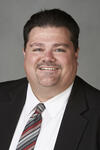In The News: School of Public Health

Opponents of Obamacare repeal and Sen. Catherine Cortez Masto, D-Nev., spoke out today against a GOP-backed Senate health care bill. An estimated 328,000 Nevada residents would lose coverage under a GOP bill, according to a report released today by advocacy group Nevadans Together for Medicaid and compiled by the nonprofit research group Nevada Institute for Children’s Research and Policy. The institute is within the UNLV School of Community Health Sciences.

County health officials have detected a species of mosquito responsible for spreading Zika and other viruses for the first time in Southern Nevada. The detection of the mosquitoes, which go by the scientific name Aedes aegypti, occurred Wednesday within the 89032 ZIP code in North Las Vegas.

Once again, Nevada lands at the bottom of a list, this time ranking the best and worst states for children’s health care. The state finished No. 51 (the study included the District of Columbia) in research by WalletHub, a credit services website. The findings continue a long, depressing tradition for Nevada, which is no stranger to performing poorly in measures of health. However, valley health care professionals say they’re optimistic that medical services for kids are improving in the state, even if it’s happening more slowly than anybody would like.
Counseling patients on exercise, clean eating, and other healthy lifestyle choices plays a significant role in disease prevention and chronic illness management. But, the modern practice of medicine, with its increased demands and time constraints, has made doctors less likely to practice what they preach. By finding ways to stay physically active throughout the day, physicians can improve their own health and productivity, as well as influence patients to adopt and maintain a healthy lifestyle.
800 pinwheels blow in the wind in Carson City, placed in one of the most prominent areas-- the legislative complex. Organizers hope the spinning wheels will bring attention to child abuse and its prevention.
A new study by researchers at the University of Nevada Las Vegas finds that motorists are less likely to yield to Black pedestrians in crosswalks than is the case for White pedestrians. The authors speculate that this may be a reason for the higher rate of fatal pedestrian incidents in the African American community.
A new study from the University of Nevada Las Vegas finds that black pedestrians are twice as likely as white pedestrians to be passed by vehicles while waiting to cross the street at a crosswalk.
Being a pedestrian in the United States is much more dangerous for black, Native American and Hispanic people than for whites. Blacks make up 12.2 percent of the population but accounted for 19.3 percent of all pedestrian deaths in the decade ending in 2014, according to a Smart Growth America study. The situation is even worse for Native Americans, who have 4.5 times the pedestrian fatality rate as whites. Hispanics, meanwhile, make up 16.9 percent of the population but 21.5 percent of these deaths. In fact, the study found that the fatality rates of non-white pedestrians exceeded their share of the population in at least 42 states and the District of Columbia.
Black pedestrians in the U.S. are more susceptible to being hit by a car when crossing the street than any other group, according to a new study that builds on what has unofficially been called "walking while black." Researchers at the University of Nevada, Las Vegas (UNLV) found that drivers were less likely to brake, stop or even slow down for black pedestrians.
Researchers at the University of Nevada, Las Vegas also found that the disparity is greater depending on whether the pedestrian is in a high- or low-income neighborhood: the average number of vehicles to pass by a black pedestrian who was already in the crosswalk was at least seven times higher compared with a white pedestrian in the wealthier neighborhood, the study’s lead researcher said.
A new study appears to offer additional evidence that drivers are less likely to brake for African-American pedestrians trying to cross the street, a phenomenon known as “walking while black.”
Drivers are less likely to brake for Black pedestrians attempting to cross the street, a new analysis finds.


